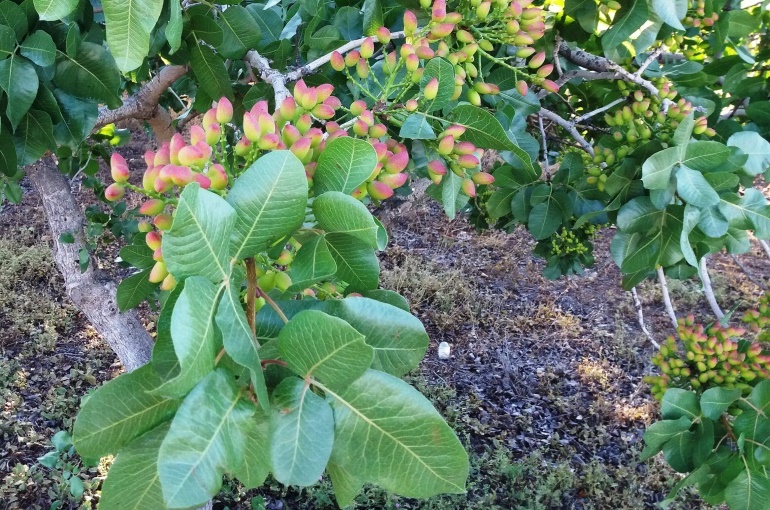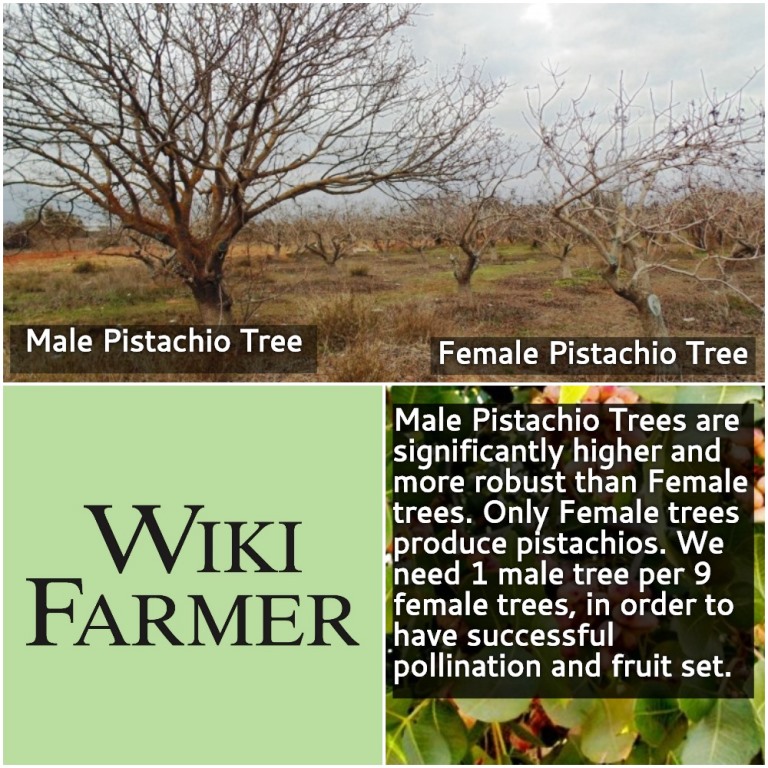Pistachio Tree Information

This post is also available in:
This post is also available in:
![]() Español (Spanish)
Español (Spanish) ![]() Français (French)
Français (French) ![]() Deutsch (German)
Deutsch (German) ![]() Nederlands (Dutch)
Nederlands (Dutch) ![]() العربية (Arabic)
العربية (Arabic) ![]() Türkçe (Turkish)
Türkçe (Turkish) ![]() 简体中文 (Chinese (Simplified))
简体中文 (Chinese (Simplified)) ![]() Italiano (Italian)
Italiano (Italian) ![]() Português (Portuguese (Brazil))
Português (Portuguese (Brazil))
Pistachio Tree Facts – Pistachio Tree AZ
Pistachio tree is a deciduous, long-living, slow-growing tree that reaches a height of 20-33 feet (6-10 meters). Pistachio tree is a dioecious tree. This means that a pistachio tree can have only male flowers (these trees are called male pistachio trees) or female flowers (the female pistachio trees). In order to set fruits, pollen from male trees must travel through the wind to female trees. Only female trees produce fruits. Consequently, if we want to harvest fruits, we must place ideally 1 male pistachio tree in the center of every 9 female pistachio trees. Male pistachio trees can be easily spotted by anyone, because they are normally higher and much more robust than the female trees.

The trunk and branches of pistachio trees have gray color, and it becomes darker over the years. The root system is strong and can reach a depth of 10 feet (3 meters) and a width of 26 feet (8 meters). The leaves begin to fall in late autumn (November in many cases). The female trees that produced fruits lose their leaves first. Then, the female trees that did not bear fruits start to lose their leaves. Finally, the male pistachio trees normally lose their leaves after female trees. The bloom usually takes place during spring (April). In many cases, a great percentage of male flowers bloom far earlier than the female flowers. As a result, a great percentage of pollen can be lost, resulting in decrease of fruit set and production. Thus, some pistachio farmers collect the pollen from male flowers, they store it suitable conditions and they disperse it in the female trees once they have bloomed. This is called artificial pollination.
Contrary to other nuts, pistachios grow in clusters, like grapes. The pistachio tree bears fruit in shoots created the year before by ordinary buds. The tree has a tendency towards Alternate Bearing (producing a lot of fruits in one year and not many fruits in the following year). The pistachio tree can normally produce good yields from the 7th year of its age. Its productive life can reach 100 years or more.
The pistachio belongs to the Anacardiaceae family. Pistacia genus includes 11 species, but Pistacia vera is the domesticated pistachio tree that is grown worldwide. The pistachio tree probably originated from Central Asia, where thousands of trees were found in areas known today as Iran and Afghanistan. Nowadays, it is cultivated in areas characterized by hot and dry climate, such as US (California), Lebanon, Syria, Iran, India, Turkey, South Europe and other countries of Asia and Africa.
You can enrich this article by leaving a comment or photo of your pistachio trees.
1.) Pistachio Tree Information
2.) How to grow Pistachio Tree from nut
3.) Starting a Pistachio Orchard
4.) Pistachio Tree Growing Conditions
5.) Pistachio Tree Propagation and Pollination
6.) Pistachio Tree Soil Conditions and Preparation
8.) Pistachio Tree Training and Pruning
9.) Pistachio Tree Fertilizer Requirements
10.) Pistachio Tree Water Requirements
11.) Pistachio Tree Harvest & Yields
12.) Pistachio Tree Diseases & Pests
Do you have experience in Pistachio Tree cultivation? Please share your experience, methods and practices in the comments below. All the content you add will be soon reviewed by our agronomists. Once approved, it will be added to Wikifarmer.com and it will influence positively thousands of new and experienced farmers across the world.









































































